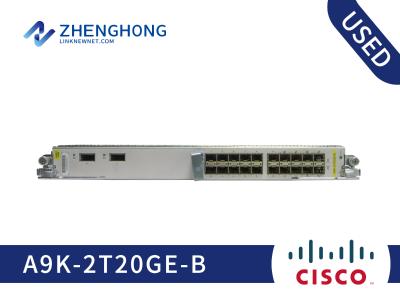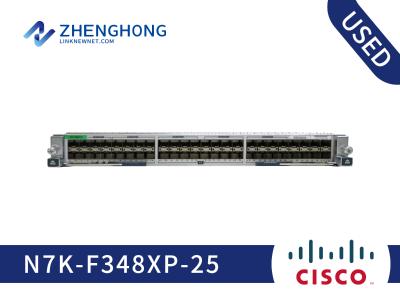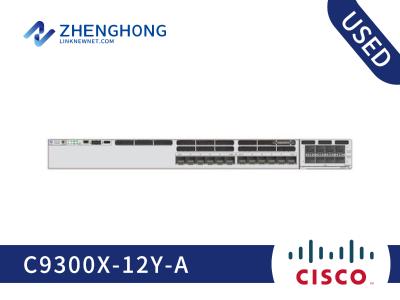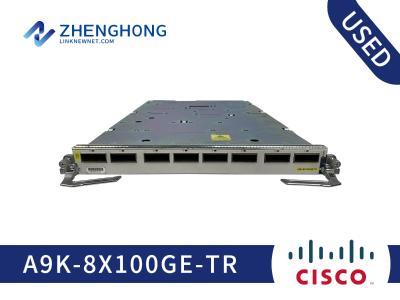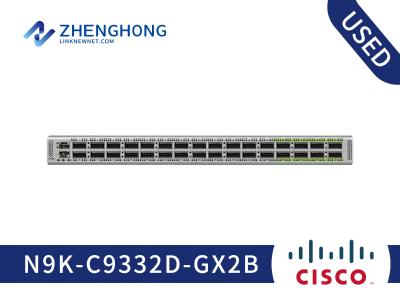AIR-AP1572EAC-B-K9 Specifications | ||||||||||||||
802.11n Version 2.0 capabilities | ● 4x4 MIMO with three spatial streams (3SS) ● Maximal Ratio Combining (MRC) ● 802.11n and 802.11a/g Beamforming ● 20- and 40-MHz channels ● PHY data rates up to 450 Mbps (40 MHz with 5 GHz) ● Packet aggregation: A-MPDU (Tx/Rx), A-MSDU (Tx/Rx) ● 802.11 Dynamic Frequency Selection (DFS) ● Cyclic Shift Diversity (CSD) support | |||||||||||||
802.11ac Wave 1 capabilities | ● 4x4 MIMO with three spatial streams (3SS) ● Maximum Ratio Combining (MRC) ● 802.11ac Beamforming ● 20-, 40-, and 80-MHz channels ● PHY data rates up to 1.3 Gbps (80 MHz with 5 GHz) ● Packet aggregation: A-MPDU (Tx/Rx), A-MSDU (Tx/Rx) ● 802.11 Dynamic Frequency Selection (DFS) ● Cyclic Shift Diversity (CSD) support | |||||||||||||
DOCSIS 3.0 Capabilities | DOCSIS3.0 with up to 8x4, 16x8, and 24x8 Downstream (DS) x Upstream (US) channel bonding capability for Hybrid Fiber-Coaxial (HFC) Cable Modem (CM) options. The CM protocols include NA-DOCSIS3.0, Euro-DOCSIS3.0 and Japan-DOCSIS3.0. The NA-DOCSIS3.0 is offered with either (42/88 MHz or 85/108 MHz) diplexer split. The Euro and Japan DOCSIS are offered with (65/108 MHz) diplexer split. NA-DOCSIS3.0, Euro-DOCSIS3.0 24x8 cable modem provides up to: ● Twenty-four (24) bonded channels on the downstream with total throughput of up to 912 and 1200 Mbps respectively (maximum usable throughput without overhead) ● Eight (8) bonded channels on the upstream with total throughput of up to 216 Mbps (maximum usable throughput without overhead) ● Designed to meet DOCSIS 3.0 specifications as well as backward compatibility with existing DOCSIS2.0 networks ● Enhanced packet processing technology to maximize performance Channel-bonded cable modems must be used in conjunction with a Cable Modem Termination System (CMTS) that supports channel bonding per the DOCSIS3.0 specifications. When used with a non-channel-bonded CMTS, channel-bonded cable modems function as conventional DOCSIS 2.0 cable modems. | |||||||||||||
Frequency Band and 20-MHz Operating Channels (Regulatory Domains) | B: 2.412 to 2.462 GHz, 11 channels 5.180 to 5.240 GHz, 4 channels 5.260 to 5.320 GHz, 4 channels 5.500 to 5.560 GHz, 4 channels 5.680 to 5.720 GHz, 3 channels 5.745 to 5.825 GHz, 5 channels | |||||||||||||
Maximum Number of Non-overlapping Channels | 2.4 GHz ● 802.11b/g: ◦ 20 MHz: 3 ● 802.11n: ◦ 20 MHz: 3 | 5 GHz ● 802.11a: ◦ 20 MHz: 27 ● 802.11n: ◦ 20 MHz: 27 ◦ 40 MHz: 13 ● 802.11ac: ◦ 20 MHz: 27 ◦ 40 MHz: 13 ◦ 80 MHz: 6 | ||||||||||||
Receive Sensitivity | 2.4 GHz 802.11, 802.11b (DSSS, CCK) -103 dBm @ 1 Mbps -101 dBm @ 2 Mbps -93 dBm @ 5.5 Mbps -90 dBm @ 11 Mbps |
|
| |||||||||||
2.4 GHz 802.11g (non HT20) -93 dBm @ 6 Mbps -93 dBm @ 9 Mbps -93 dBm @ 12 Mbps -92 dBm @ 18 Mbps -89 dBm @ 24 Mbps -87 dBm @ 36 Mbps -82 dBm @ 48 Mbps -81 dBm @ 54 Mbps | 5 GHz 802.11a (non HT20) -92 dBm @ 6 Mbps -92 dBm @ 9 Mbps -92 dBm @ 12 Mbps -91 dBm @ 18 Mbps -89 dBm @ 24 Mbps -86 dBm @ 36 Mbps -81 dBm @ 48 Mbps -80 dBm @ 54 Mbps |
| ||||||||||||
2.4-GHz 802.11n (HT20) -93 dBm @ MCS0 -93 dBm @ MCS1 -91 dBm @ MCS2 -88 dBm @ MCS3 -85 dBm @ MCS4 -80 dBm @ MCS5 -79 dBm @ MCS6 -78 dBm @ MCS7 -93 dBm @ MCS8 -91 dBm @ MCS9 -89 dBm @ MCS10 -86 dBm @ MCS11 -82 dBm @ MCS12 -78 dBm @ MCS13 -77 dBm @ MCS14 -76 dBm @ MCS15 -93 dBm @ MCS16 -90 dBm @ MCS17 -88 dBm @ MCS18 -84 dBm @ MCS19 -81 dBm @ MCS20 -77 dBm @ MCS21 -75 dBm @ MCS22 -74 dBm @ MCS23 | 5-GHz 802.11n (HT20) -92 dBm @ MCS0 -91 dBm @ MCS1 -90 dBm @ MCS2 -87 dBm @ MCS3 -84 dBm @ MCS4 -79 dBm @ MCS5 -78 dBm @ MCS6 -77 dBm @ MCS7 -92 dBm @ MCS8 -90 dBm @ MCS9 -87 dBm @ MCS10 -85 dBm @ MCS11 -81 dBm @ MCS12 -77 dBm @ MCS13 -76 dBm @ MCS14 -74 dBm @ MCS15 -91 dBm @ MCS16 -89 dBm @ MCS17 -87 dBm @ MCS18 -84 dBm @ MCS19 -80 dBm @ MCS20 -76 dBm @ MCS21 -75 dBm @ MCS22 -73 dBm @ MCS23 | 5-GHz 802.11n (HT40) -88 dBm @ MCS0 -88 dBm @ MCS1 -87 dBm @ MCS2 -84 dBm @ MCS3 -81 dBm @ MCS4 -76 dBm @ MCS5 -75 dBm @ MCS6 -74 dBm @ MCS7 -89 dBm @ MCS8 -87 dBm @ MCS9 -85 dBm @ MCS10 -82 dBm @ MCS11 -79 dBm @ MCS12 -74 dBm @ MCS13 -73 dBm @ MCS14 -71 dBm @ MCS15 -88 dBm @ MCS16 -86 dBm @ MCS17 -84 dBm @ MCS18 -80 dBm @ MCS19 -78 dBm @ MCS20 -73 dBm @ MCS21 -71 dBm @ MCS22 -70 dBm @ MCS23 | ||||||||||||
Spatial Streams | MCS Index | 5 GHz 802.11ac (VHT20) | 5 GHz 802.11ac (VHT40) | 5 GHz 802.11ac (VHT80) | ||||||||||
1 | 0 | -92 | -89 | -85 | ||||||||||
1 | 4 | -86 | -83 | -80 | ||||||||||
1 | 7 | -79 | -75 | -73 | ||||||||||
1 | 8 | -74 | -71 | -68 | ||||||||||
1 | 9 | NA | -69 | -66 | ||||||||||
2 | 0 | -92 | -89 | -85 | ||||||||||
2 | 4 | -83 | -81 | -77 | ||||||||||
2 | 7 | -76 | -74 | -70 | ||||||||||
| 2 | 8 | -72 | -68 | -66 | |||||||||
2 | 9 | NA | -67 | -63 | ||||||||||
3 | 0 | -91 | -89 | -85 | ||||||||||
3 | 4 | -82 | -79 | -76 | ||||||||||
3 | 7 | -75 | -72 | -69 | ||||||||||
3 | 8 | -69 | -66 | -64 | ||||||||||
3 | 9 | -66 | -64 | -60 | ||||||||||
Maximum Conducted Transmit Power | 2.4 GHz ● 802.11, 802.11b (DSSS, CCK) ◦ 30 dBm with 4 antennas ● 802.11g (non-HT20) ◦ 30 dBm with 4 antennas ● 802.11n (HT20) ◦ 30 dBm with 4 antennas | 5 GHz ● 802.11a (non HT20) ◦ 30 dBm with 4 antennas ● 802.11n non-HT duplicate (802.11a duplicate) mode ◦ 30 dBm with 4 antennas ● 802.11n (HT20) ◦ 30 dBm with 4 antennas ● 802.11n (HT40) ◦ 30 dBm with 4 antennas ● 802.11ac ◦ non-HT80: 30 dBm, 4 antennas ◦ VHT20: 30 dBm, 4 antennas ◦ VHT40: 30 dBm, 4 antennas ◦ VHT80: 30 dBm, 4 antennas ◦ VHT20-STBC: 30 dBm, 4 antennas ◦ VHT40-STBC: 30 dBm, 4 antennas ◦ VHT80-STBC: 30 dBm, 4 antennas | ||||||||||||
Note: The maximum power setting will vary by channel and according to individual country regulations. | ||||||||||||||
Interface | ● WAN port 10/100/1000BASE-T Ethernet, autosensing (RJ-45) ● LAN port 10/100/1000BASE-T Ethernet, autosensing (RJ-45) ● Fiber SFP ● Cable modem: NA-DOCSIS3.0/Euro-DOCSIS3.0/Japan-DOCSIS3.0 (8x4, 16x8, or 24x8) ● Management console port (RJ-45) ● Four multicolor LEDs ● Reset button | |||||||||||||
Uplink options | 1572EAC 1572IC 1572EC | Ethernet, Fiber SFP, Wireless Mesh Ethernet, Fiber SFP, Wireless Mesh, Cable Modem Ethernet, Fiber SFP, Wireless Mesh, Cable Modem | ||||||||||||
Dimensions (L x W x D) | 1572EAC/1572EC 1572IC | 11.8 x 7.9 x 6.3 in. 11.8 x 7.9 x 7.9 in. | (30.0 x 20.1 x 16.0 cm) (30.0 x 20.1 x 20.1 cm) | |||||||||||
Weight | 1572EAC/1572EC 1572IC Pole mounting Kit 1 (PMK1): Pole mounting Kit 2 (PMK2): Pole mounting Kit 3 (PMK3): Cable strand mounting bracket 1 (SMK1): Cable strand mounting bracket 2 (SMK2): Cable strand mounting bracket 2 (SMK3): | 13.5 lbs. (6.1 kg) 11.5 lbs. (5.2 kg) 2.2 lbs. (1.0 kg) 4.4 lbs. (2.0 kg) 6.1 lbs. (2.8 kg) 0.3 lbs. (0.2 kg) 0.7 lbs. (0.3 kg) 1.2 lbs. (0.5 kg) | ||||||||||||
Environmental | Operating temperature: ● -40 to 65°C (-40 to 149°F) ambient air with no solar loading ● -40 to 55°C (-40 to 131°F) ambient air with solar loading 743W/m2 (details in HW installation guide) Storage temperature: -50 to 70°C (-58 to 158°F) Humidity: 5 - 95%, non-condensing Wind resistance: ● Up to 100-MPH sustained winds ● Up to 165-MPH wind gusts | |||||||||||||
Environmental Ratings | IP67 NEMA Type 4X | |||||||||||||
Compliance | Safety ● UL/cUL 60950, 2nd Edition ● IEC 60950, 2nd Edition ● EN 60950, 2nd Edition ● ARIB-STD 66 (Japan) ● ARIB-STD T71 (Japan) Immunity ● <= 5 mJ f or 6kV/3kA @ 8/20 ms waveform ● ANSI/IEEE C62.41 ● EN61000-4-5 Level 4 AC Surge Immunity ● EN61000-4-4 Level 4 Electrical Fast Transient Burst Immunity ● EN61000-4-3 Level 4 EMC Field Immunity ● EN61000-4-2 Level 4 ESD Immunity ● EN60950 Overvoltage Category IV Radio approvals ● FCC Part 15.247, 15.407 ● FCC Bulletin OET-65C ● RSS-210 ● RSS-102 ● AS/NZS 4268.2003 ● EN 300 328 ● EN 301 893 EMI and susceptibility ● FCC part 15.107, 15.109 ● ICES-003 ● EN 301 489-1, -17 Security ● Wireless bridging/mesh ◦ X.509 digital certificates ◦ MAC address authentication ◦ Advanced Encryption Standards (AES), Temporal Key Integrity Protocol (TKIP) ● Wireless access ◦ 802.11i, Wi-Fi Protected Access (WPA2), WPA ◦ 802.1X authentication, including Extensible Authentication Protocol and Protected EAP (EAP-PEAP), EAP Transport Layer Security (EAP-TLS), EAP-Tunneled TLS (EAP-TTLS), and Cisco LEAP ◦ Advanced Encryption Standards (AES), Temporal Key Integrity Protocol (TKIP) ◦ VPN pass-through ◦ IP Security (IPsec) ◦ Layer 2 Tunneling Protocol (L2TP) ● MAC address filtering | |||||||||||||
Configuration Options | Flexible deployment configurations include: ● Controller-based ● Standalone (future) ● Mesh ● Point-to-point or point-to-multipoint campus bridge ● Serial backhaul (linear mesh) ● Workgroup bridge | |||||||||||||
- Home
- Promotion
-
Products
-
CISCO
-
Switches
- Cisco Nexus 9000 Series
- Cisco Nexus 7000 Series
- Cisco Nexus 5000 Series
- Cisco Nexus 3000 Series
- Cisco Nexus 2000 Series
- Cisco Catalyst 9600 Series
- Cisco Catalyst 9500 Series
- Cisco Catalyst 9400 Series
- Cisco Catalyst 9300 Series
- Cisco Catalyst 9200 Series
- Cisco Catalyst 6800 Series
- Cisco Catalyst 6500 Series
- Cisco Catalyst 4900 Series
- Cisco Catalyst 4500 Series
- Cisco Catalyst 3850 Series
- Cisco Catalyst 3750 Series
- Cisco Catalyst 3650 Series
- Cisco Catalyst 3560 Series
- Cisco Catalyst 2960 Series
- Cisco Catalyst 2950 Series
- Cisco Catalyst 1000 Series
-
Routers
- Cisco Router ASR 9000 Series
- Cisco Router ASR 5000 Series
- Cisco Router ASR 1000 Series
- Cisco Router ASR 900 Series
- Cisco Router ISR 4000 Series
- Cisco Router ISR 3900 Series
- Cisco Router ISR 3800 Series
- Cisco Router ISR 2900 Series
- Cisco Router ISR 2800 Series
- Cisco Router ISR 1900 Series
- Cisco Router ISR 1800 Series
- Cisco Router ISR 1100 Series
- Cisco Router ISR 800 Series
- Cisco Router ISR 900 Series
- Cisco Router 12000 Series
- Cisco Router 10000 Series
- Cisco Router 8000 Series
- Cisco Router 7600 Series
- Cisco Router 7200 Series
- Cisco Catalyst 8500 Series
- Cisco Catalyst 8300 Series
- Cisco Catalyst 8200 Series
- Cisco Industrial Routers
- Firewalls & Security
-
Wireless AP & Controllers
- Cisco 1410 Access Point
- Cisco 1040 Access Point
- Cisco 1240 Access Point
- Cisco 1260 Access Point
- Cisco 1310 Access Point
- Cisco 521 Access Point
- Cisco 600 Access Point
- Cisco 1130 Access Point
- Cisco 1140 Access Point
- Cisco 700 Access Point
- Cisco 3600 Access Point
- AP and Bridge Accessories
- Cisco 2700 Access Point
- Cisco 1520 Mesh Access Point
- Cisco 3500 Access Point
- Cisco 1530 Outdoor Access point
- Cisco 1550 Access Point
- Cisco 1700 Access Point
- Cisco 1600 Access Point
- Cisco Antenna 2.4 5 5.8 GHz
- Cisco 3700 Access Point
- Cisco 2600 Access Point
- Cisco 1570 Outdoor Access Point
- Cisco Aironet 1562I Outdoor Access Point
- Cisco Catalyst IW6300 Series Heavy Duty Access Points
- Cisco Catalyst 9100 WiFi 6 Access Point
- Cisco 4800 Access Point
- Cisco 2800 Access Point
- Cisco 3800 Access Point
- Cisco 1850 Access Point
-
Interfaces & Modules
- Cisco Nexus 9000 Switch Modules
- Cisco Nexus 7000 Switch Modules
- Cisco Nexus 5000 Switch Modules
- Cisco Nexus 3000 Switch Modules
- Cisco Catalyst 9000 Switch Modules
- Cisco Catalyst 8000 Series Edge Platforms Modules
- Cisco ISR 4000 Router Modules
- Cisco ASR 1000 Router Modules
- Cisco 8000 Series Routers Modules
- Cisco 7600 Router Modules
- Cisco 7200 Router Modules
- Cisco 6800 Switch Modules
- Cisco 6500 Switch Modules
- Cisco 4500 Switch Modules
- Cisco Router ISR G2 SM ISM Modules
- Cisco NM NME EM Network Modules
- Cisco Wireless Services Module
- Cisco Controller Modules
- Cisco Router AIM Modules
- Cisco Router EHWIC WAN Cards
- Cisco Router VWIC2 VWIC3 Cards
- Cisco IE Switch Modules
- Cisco Firewalls Modules
- PVDM Voice/FAX Modules
- Cisco Virtual Interface Card
- Cisco WAN Interface Cards
- Fiber Transceivers
-
Memory & Flash
-
IP Phone & Telepresence
-
Optical Networking
-
Power Supply & Fan Tray
-
Other Products
-
Switches
-
HUAWEI
-
Switches
- Huawei S12700 Series
- Huawei S9700 Series
- Huawei S9300 Series
- Huawei S7700 Series
- Huawei S6700 Series
- Huawei S6300 Series
- Huawei S5700S Series
- Huawei S5700 Series
- Huawei S5300 Series
- Huawei S3700 Series
- Huawei S3300 Series
- Huawei S2700 Series
- Huawei S2300 Series
- Huawei S1700 Series
- Huawei S6800 Series
- Huawei Data Center Switches
-
Firewalls
-
Switches
-
A10 Networks
-
H3C
- Juniper
-
F5
-
FortiGate
-
IBM
-
DELL
-
Lenovo
- MikroTik
- Quanta
-
Others
Hot Cisco Firepower:-
CISCO
-
Switches
- Cisco Nexus 9000 Series
- Cisco Nexus 7000 Series
- Cisco Nexus 5000 Series
- Cisco Nexus 3000 Series
- Cisco Nexus 2000 Series
- Cisco Catalyst 9600 Series
- Cisco Catalyst 9500 Series
- Cisco Catalyst 9400 Series
- Cisco Catalyst 9300 Series
- Cisco Catalyst 9200 Series
- Cisco Catalyst 6800 Series
- Cisco Catalyst 6500 Series
- Cisco Catalyst 4900 Series
- Cisco Catalyst 4500 Series
- Cisco Catalyst 3850 Series
- Cisco Catalyst 3750 Series
- Cisco Catalyst 3650 Series
- Cisco Catalyst 3560 Series
- Cisco Catalyst 2960 Series
- Cisco Catalyst 2950 Series
- Cisco Catalyst 1000 Series
-
Routers
- Cisco Router ASR 9000 Series
- Cisco Router ASR 5000 Series
- Cisco Router ASR 1000 Series
- Cisco Router ASR 900 Series
- Cisco Router ISR 4000 Series
- Cisco Router ISR 3900 Series
- Cisco Router ISR 3800 Series
- Cisco Router ISR 2900 Series
- Cisco Router ISR 2800 Series
- Cisco Router ISR 1900 Series
- Cisco Router ISR 1800 Series
- Cisco Router ISR 1100 Series
- Cisco Router ISR 800 Series
- Cisco Router ISR 900 Series
- Cisco Router 12000 Series
- Cisco Router 10000 Series
- Cisco Router 8000 Series
- Cisco Router 7600 Series
- Cisco Router 7200 Series
- Cisco Catalyst 8500 Series
- Cisco Catalyst 8300 Series
- Cisco Catalyst 8200 Series
- Cisco Industrial Routers
- Firewalls & Security
-
Wireless AP & Controllers
- Cisco 1410 Access Point
- Cisco 1040 Access Point
- Cisco 1240 Access Point
- Cisco 1260 Access Point
- Cisco 1310 Access Point
- Cisco 521 Access Point
- Cisco 600 Access Point
- Cisco 1130 Access Point
- Cisco 1140 Access Point
- Cisco 700 Access Point
- Cisco 3600 Access Point
- AP and Bridge Accessories
- Cisco 2700 Access Point
- Cisco 1520 Mesh Access Point
- Cisco 3500 Access Point
- Cisco 1530 Outdoor Access point
- Cisco 1550 Access Point
- Cisco 1700 Access Point
- Cisco 1600 Access Point
- Cisco Antenna 2.4 5 5.8 GHz
- Cisco 3700 Access Point
- Cisco 2600 Access Point
- Cisco 1570 Outdoor Access Point
- Cisco Aironet 1562I Outdoor Access Point
- Cisco Catalyst IW6300 Series Heavy Duty Access Points
- Cisco Catalyst 9100 WiFi 6 Access Point
- Cisco 4800 Access Point
- Cisco 2800 Access Point
- Cisco 3800 Access Point
- Cisco 1850 Access Point
-
Interfaces & Modules
- Cisco Nexus 9000 Switch Modules
- Cisco Nexus 7000 Switch Modules
- Cisco Nexus 5000 Switch Modules
- Cisco Nexus 3000 Switch Modules
- Cisco Catalyst 9000 Switch Modules
- Cisco Catalyst 8000 Series Edge Platforms Modules
- Cisco ISR 4000 Router Modules
- Cisco ASR 1000 Router Modules
- Cisco 8000 Series Routers Modules
- Cisco 7600 Router Modules
- Cisco 7200 Router Modules
- Cisco 6800 Switch Modules
- Cisco 6500 Switch Modules
- Cisco 4500 Switch Modules
- Cisco Router ISR G2 SM ISM Modules
- Cisco NM NME EM Network Modules
- Cisco Wireless Services Module
- Cisco Controller Modules
- Cisco Router AIM Modules
- Cisco Router EHWIC WAN Cards
- Cisco Router VWIC2 VWIC3 Cards
- Cisco IE Switch Modules
- Cisco Firewalls Modules
- PVDM Voice/FAX Modules
- Cisco Virtual Interface Card
- Cisco WAN Interface Cards
- Fiber Transceivers
-
Memory & Flash
-
IP Phone & Telepresence
-
Optical Networking
-
Power Supply & Fan Tray
-
Other Products
-
Switches
-
HUAWEI
-
Switches
- Huawei S12700 Series
- Huawei S9700 Series
- Huawei S9300 Series
- Huawei S7700 Series
- Huawei S6700 Series
- Huawei S6300 Series
- Huawei S5700S Series
- Huawei S5700 Series
- Huawei S5300 Series
- Huawei S3700 Series
- Huawei S3300 Series
- Huawei S2700 Series
- Huawei S2300 Series
- Huawei S1700 Series
- Huawei S6800 Series
- Huawei Data Center Switches
-
Firewalls
-
Switches
-
A10 Networks
-
H3C
- Juniper
-
F5
-
FortiGate
-
IBM
-
DELL
-
Lenovo
- MikroTik
- Quanta
-
Others
-
CISCO
- Accessories
- Blog
-
About us
About Linknewnet
Selling mid-to-high-end network products:Switch/Router/Firewall/Line Card and various accessories from mainstream brands such as Cisco, HUAWEI, H3C, Juniper, Brocade, HP, F5, FortiGate, A10 Networks, etc.
-
Phone :
+86 18038172140
- Mail :
- Shop :
-
Phone :
-
Contact us
Contact us
contact us if there's a model not in our website, our sourcing team will spare no effort working on it with lowest price and best service.
-
WhatsApp +86 18038172140
-
Phone
+86 18038172140
-
Mail
-
Address
3/F, Building B, 312 Jihua Road, Debaoli Industrial Zone, Bantian, Shenzhen, Longgang District, China
-
- Inquiry 0















